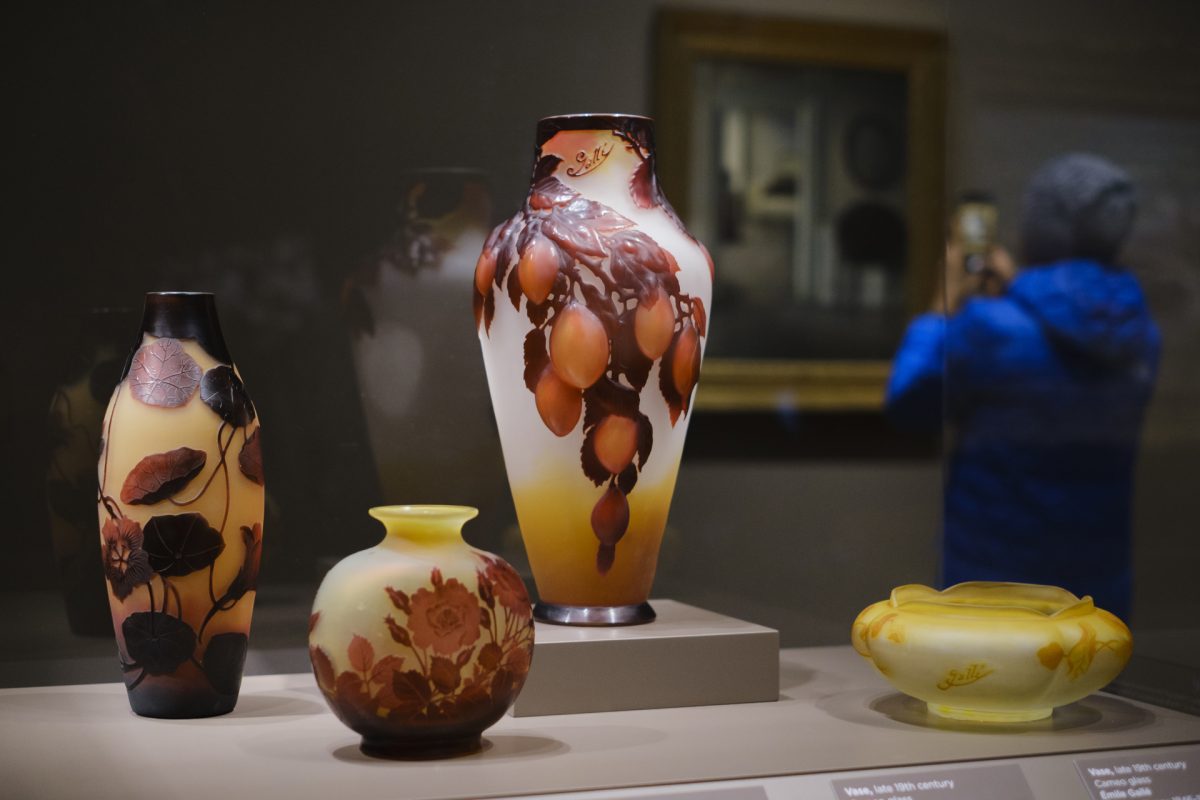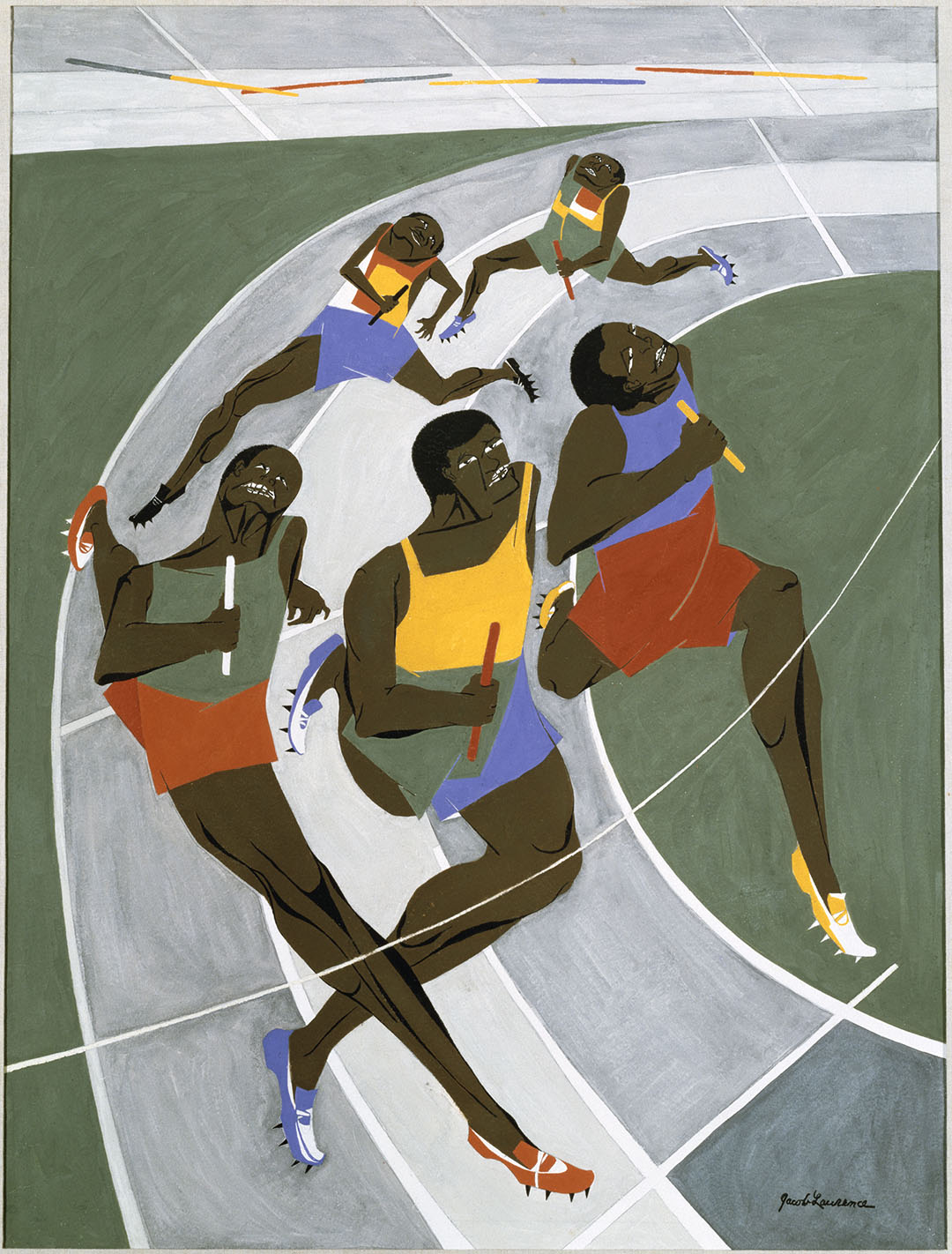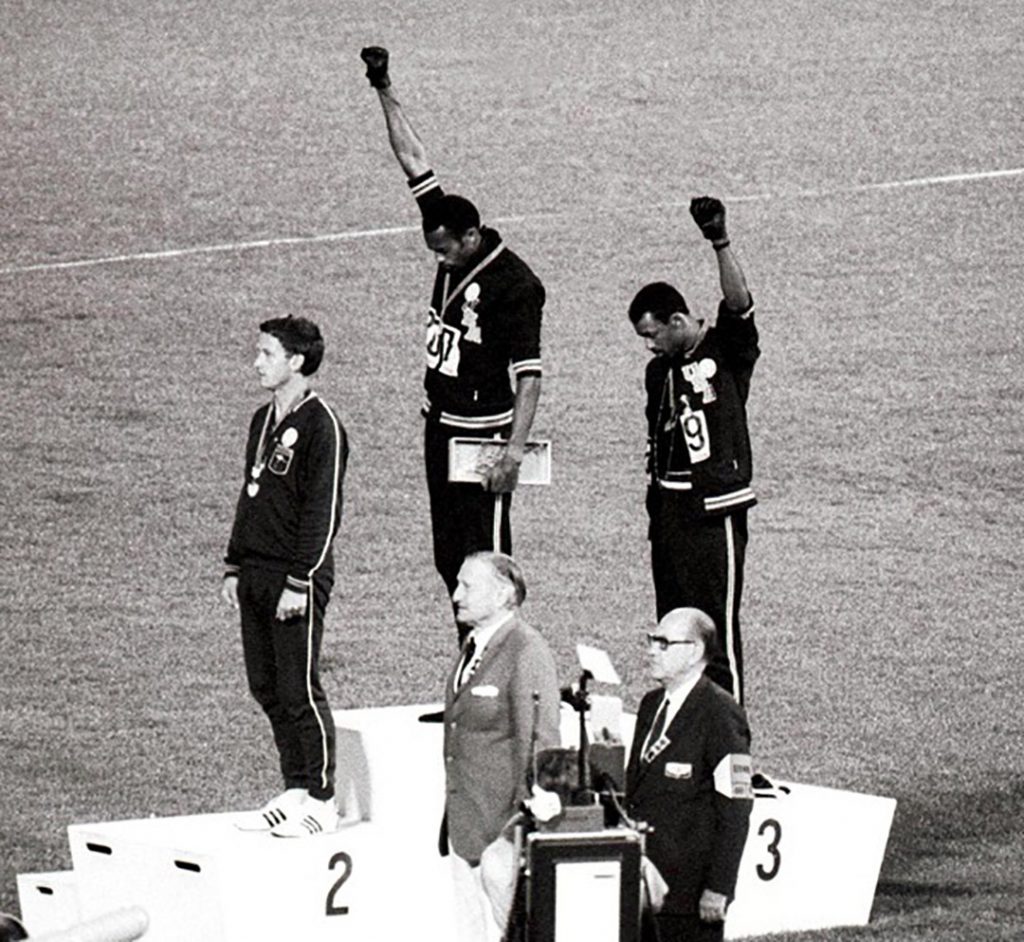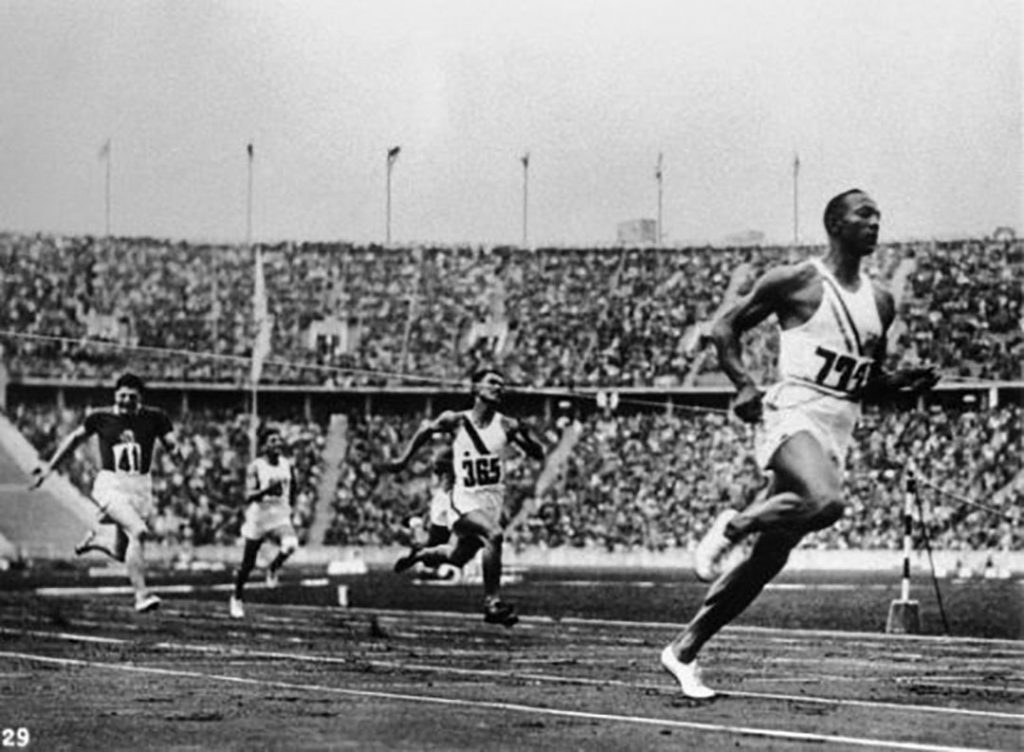The Boys in the Boat: See UW Rower Robert Moch’s Vase Collection at SAM
Originally published in 2014, The Boys in the Boat by Daniel James Brown recounts the true story of how nine University of Washington rowers beat the odds to win gold at the 1936 Berlin Olympics. Following the December 2023 release of the story’s film adaptation, we thought we’d take this opportunity to share about one of the rowers’ special connection to the Seattle Art Museum.
While browsing through SAM’s European art galleries, you may spot the name Robert G. Moch. Known as Bob and Bobby to those who knew him, Moch led the University of Washington rowers to victory as the team’s coxswain. Following his retirement from rowing and an illustrious law career, he and his wife, LaVerne Moch, donated several pieces of 19th century French glass to the museum.
These 10 vases, donated by the Moch family in 1995, were designed by well-known glass designer Émile Gallé (1846–1904) around the end of the 1800s and utilize the popular technique known as cameo glass. With their stylized floral patterns—like silhouettes layered atop the lighter glass—the artworks demonstrate the Art Nouveau style and the influence it derived from Japanese designs.
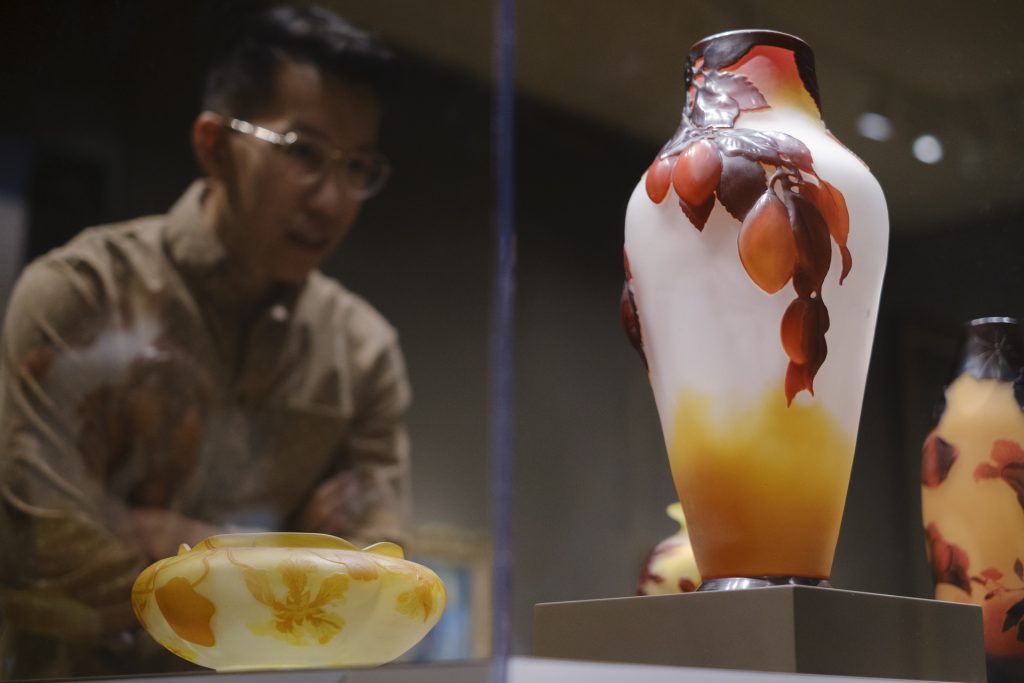
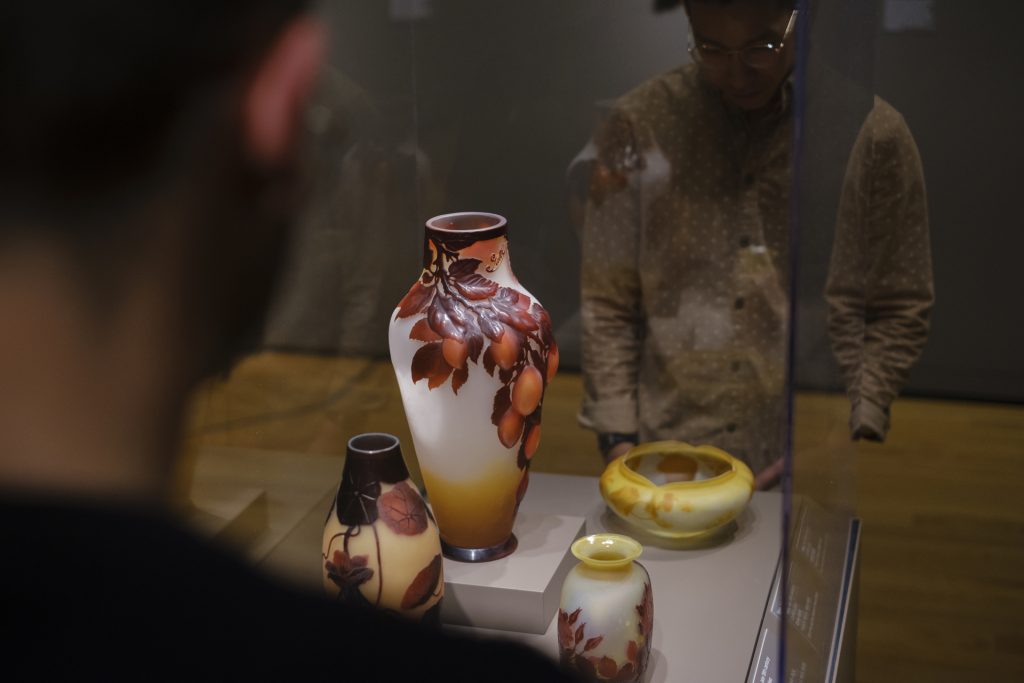
The 1936 Olympics in which Moch and his teammates competed were particularly notable as a result of increasing political tensions brought on by Adolf Hitler’s dictatorial rule. Although the city of Berlin had been chosen to host the Games before Hitler’s rise to power, he used the international attention of the Olympics as a way to propagandize Germany’s superiority and bolster his fascist and racist beliefs. The Nazi Party intended to ban Black and Jewish athletes from competing, but decided against enforcing these restrictions after the US and other nations threatened to boycott the Games.
Some Jewish members of the US Olympic team, including Moch, described feeling tense as they competed in front of Hitler and other Nazi leaders. Moch had learned of his Jewish heritage shortly before making the voyage to Berlin.
Despite the fraught political and social circumstances of 1936, the story of the “boys in the boat” is inspiring in itself. The rowing team was composed of young men attending a public university to seek a better life and financial stability amid the hardships of the Great Depression (1929–1939). They beat out other Ivy League collegiate teams to qualify for the games and launched a public fundraising campaign to travel to Berlin. During the actual race, the team faced horrible crosswinds, one of their rowers was dealing with a severe bronchial infection, and Moch missed the starting call. Yet, the rowers managed to steadily pull up from last to first place in a nail-biting finish.
In addition to rowing, the US brought home the gold in many other events, including Black athlete Jesse Owens’s historic four gold medals in track and field.
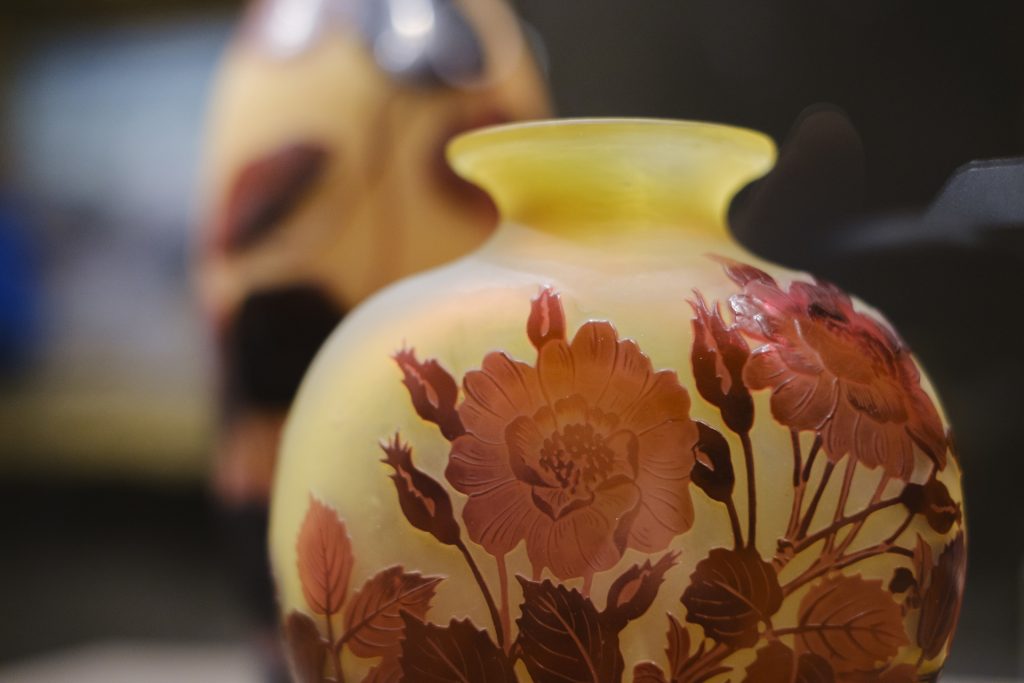
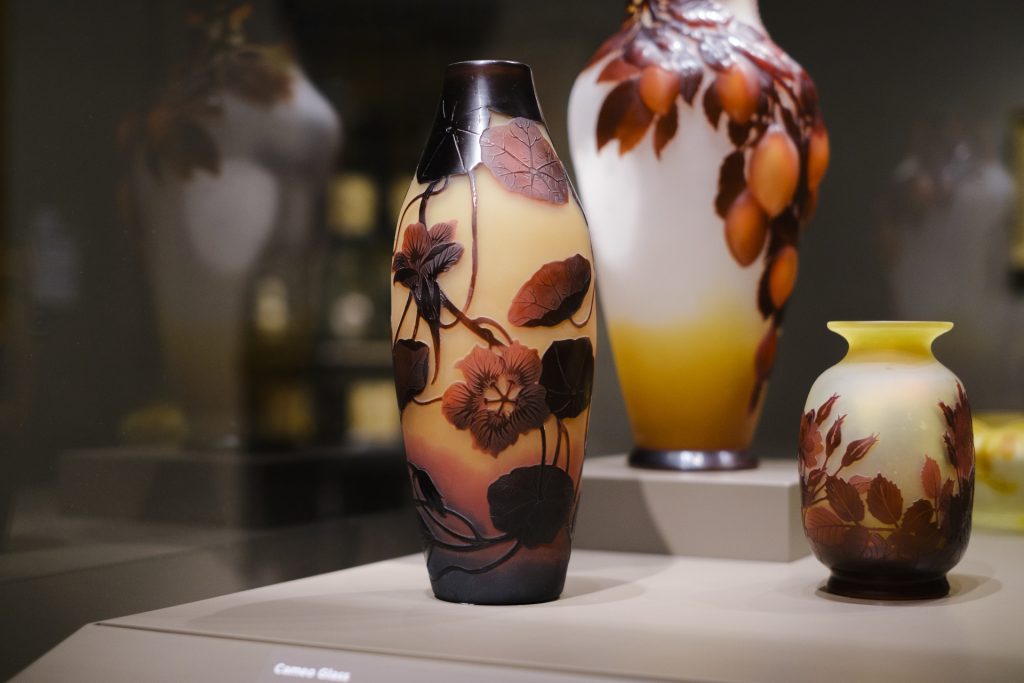
The release of Daniel James Brown’s book brought renewed attention to this epic moment in American history. In 2016, PBS produced the documentary The Boys of ‘36 and in December 2023, a film adaptation of the book directed by George Clooney was released with Luke Slattery portraying Moch.
Ten years after donating his vases to SAM, Moch passed away. While we don’t know much about how he and LaVerne collected these glass vases, the museum is grateful for their donation to SAM and to retain a piece of Moch’s legacy. Many of the vases the Moch family donated are now on view in SAM’s fourth-floor European art galleries through March 2024 and will return later in 2024 when the museum’s European art galleries reopen!
– Nicole Block, SAM Collections Associate
Photos: Alborz Kamalizad.
